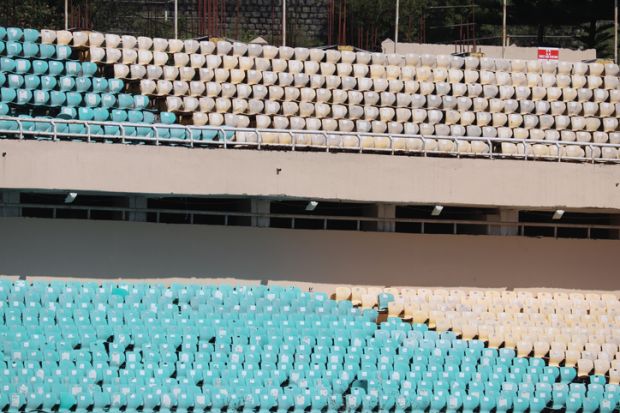Seven in 10 positions set aside for faculty members from India’s lower castes have yet to be filled, according to recently released figures from the country’s Ministry of Education.
Only 449 of 1,439 vacancies for faculty members who belong to scheduled tribes, scheduled castes or “other backward classes” had been filled, based on figures for the year from September 2021, according to national media. The high vacancy rate comes despite a year-long government push to recruit more candidates into the jobs.
It also takes place amid a broader struggle to fill faculty positions at Indian central universities and the country’s prestigious Indian Institutes of Technology (IITs), with more than 14,000 faculty posts in the country currently unoccupied, according to reports.
Even so, recent statistics show that lower-caste faculty are highly underrepresented at India’s top institutions. At the most selective IITs and the Indian Institute of Science, 98 per cent of professors and more than 90 per cent of assistant or associate professors belong to privileged castes, a January report in the journal Nature found.
Shruti Kapila, a professor of Indian history and global political thought at Corpus Christi College, Cambridge, said that the situation hasn’t substantially changed in recent years despite a constitutional mandate to recruit a certain proportion of faculty from lower castes.
“India has a big problem on diversity and equity in higher education, particularly in the recruitment of faculty and senior leadership of institutions,” she said. “This is paradoxical, because India has the largest what in the West is called ‘affirmative action’ programme, the reservation system.”
While universities set aside spots for lower-caste students – including the lowest caste of Dalits, previously called “untouchables” – there needs to be more transparency on their career trajectories, she believed.
“Dalit students are coming and studying, but then what happens to them?” asked Professor Kapila.
Suraj Yengde, a Dalit activist and a research associate in Harvard University’s department of African and African American studies, was incredulous that even after a government push, Indian publicly funded universities were so far behind on recruiting the needed number of reserved faculty.
He also wanted to know what happens behind closed doors. Dr Yengde recounted an anecdote about a highly published young Dalit academic at a top Indian university who, despite surpassing the qualifications needed for the job, was not given a promotion by older, upper-caste colleagues.
“You have cases where promotions are stalled internally,” he said.
In the case of external candidates, there can be a feeling that the “person who is applying under [a] quota is not necessarily appreciated”, he said.
Dr Yengde argued that institutions and the government should pay closer attention to what happens during the interview process.
A simple fix could be for universities to ensure they have diverse panels for recruiting faculty, he said.
“Once you have more representation…give them the task [to] go find and hire these people.”
Register to continue
Why register?
- Registration is free and only takes a moment
- Once registered, you can read 3 articles a month
- Sign up for our newsletter
Subscribe
Or subscribe for unlimited access to:
- Unlimited access to news, views, insights & reviews
- Digital editions
- Digital access to THE’s university and college rankings analysis
Already registered or a current subscriber? Login








